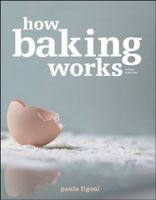Advertisement
3. Microorganisms Die.
Appears in
By Paula Figoni
Published 2003
Microorganisms are small (microscopic) living entities. Examples of microorganisms include yeast, mold, bacteria, and viruses. Most die by 135°–140°F (55°–60°C), but the actual temperature depends on several things, including the type of microorganism and the amount of sugar and salt present.
Once yeast dies, fermentation stops (meaning the yeast no longer produces carbon dioxide from sugars). This is desirable because overfermented dough has an overpowering sour flavor. Besides killing yeast, heat also kills pathogenic microorganisms such as salmonella. Pathogenic microorganisms are those that cause illness or even death. Thus, cooking or baking makes food safer to eat.

